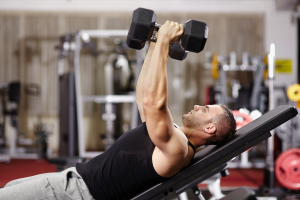Holiday Survival Guide
It’s here – whether you’re ready or not. Just look at the seasonal shelves in your favorite store. Retailers like to call it ‘holiday season’ but let’s be more accurate.
Weight Gain season begins now and runs straight through New Year’s.
The next two months will bring ample opportunity for you to expand your waistline. Of course the choice is yours.

Why discuss it now and not mid-way through December? Because now is your opportunity to plan for the weeks ahead. Once the craziness begins, you’ll be too busy to put a plan into action.
So let’s take this moment of clarity, this calm before the storm, to outline a two-part plan that will save your waist from unwanted holiday inches.
Part One: Your Exercise Plan.
Exercise is the first thing people cut when they get busy, and the holiday season is notorious for empty gyms. This year do something different-obligate yourself to exercise. Promising to yourself won’t do it, you need to promise to others so that you won’t drop the ball.
• Schedule your workouts in advance – This is the perfect solution for consistent, challenging and effective workouts. I’ll give you the attention and assistance that you need to power through the holidays in better shape than ever – talk about motivating!
• Join a class – You won’t be as effective exercising on your own during the busy holiday season, so join a class for accountability – there are 2 HIIT and 3 bootcamp classes every week, and plenty of spinning opportunities with Chandra. Find something challenging that gets your heart rate elevated and uses strength training.
• Get a serious exercise buddy – Some friends can be an awesome help, while others end up pulling you down. When looking for an exercise buddy consider the following questions:
– Do they share your fitness goals?
– Are they fairly encouraging?
– Do they give up easily?
– Are they at your fitness level?
Part Two: Your Nutrition Plan.
The holidays offer ample opportunities to indulge, so you need to hammer down some guidelines before hitting that buffet line. I’m not saying that you shouldn’t indulge in any seasonal treats, but use moderation. Don’t use the holidays as an excuse to eat until the point of being uncomfortable – will you really miss that bloated feeling? Decide which treats to cut out this year.
Don’t bring edible treats to the office or to parties. Leftovers have a tendency to make their way back home, and you’ll end up eating far more than your share. This year, do everyone a favor by not gifting fattening treats.
When faced with a buffet line, load your plate first with greens, vegetables and lean meats before breads and heavier foods. Also drink water with your meal and keep alcoholic beverages to a 2-drink maximum.
Beware of holiday drinks – most are brimming with calories. Hot drinks from coffee shops, cocktails at parties and creamy eggnog are all very enjoyable, but also all filled with empty calories. Stick with hot tea or unsweetened coffee.
Everywhere you go during the holiday season brings you face-to-face with a plate of sweets. To avoid adding inches to your waist, try the one treat rule. Each time you’re in a social situation that involves sweets just eat one, and enjoy your treat slowly.
You don’t have to gain weight this holiday season. The key is your mindset.
If you approach the holidays with the mindset of, ‘I deserve to indulge and I shouldn’t have to exercise’ then you’ll enter 2015 a few pounds heavier, a little less healthy, and with lower energy than ever before.
I believe that you deserve better. I believe that you should enter 2015 in better shape than you are today, healthier than you’ve been in a long time, and with more energy than you thought possible.

